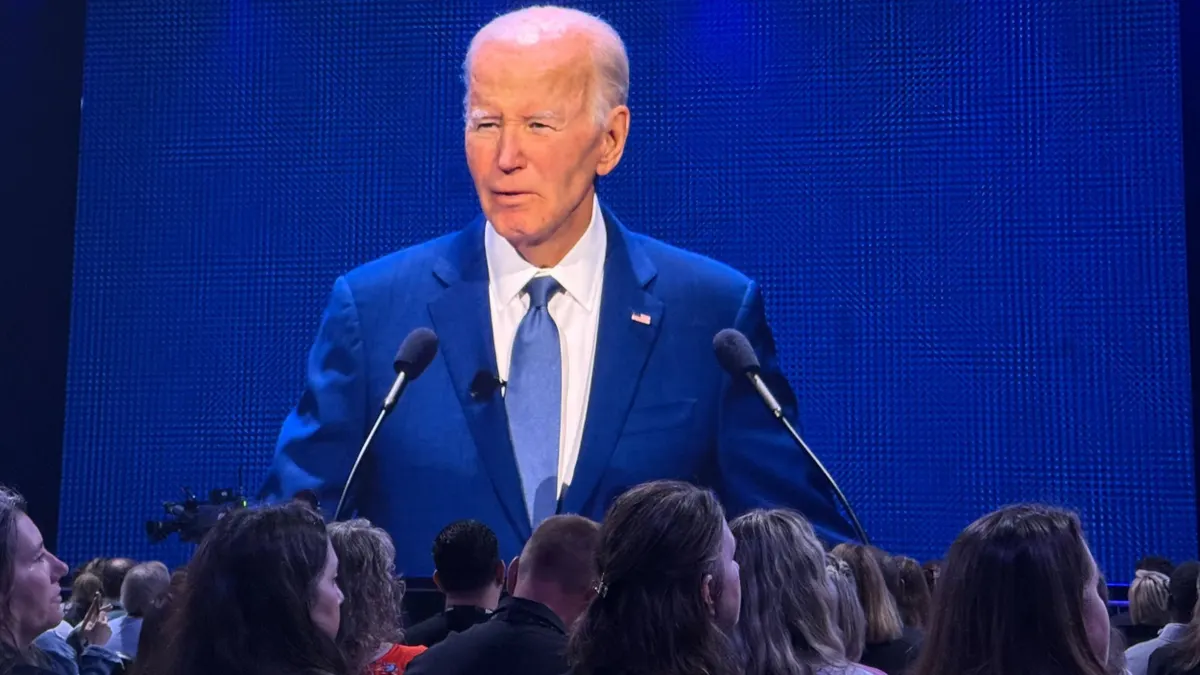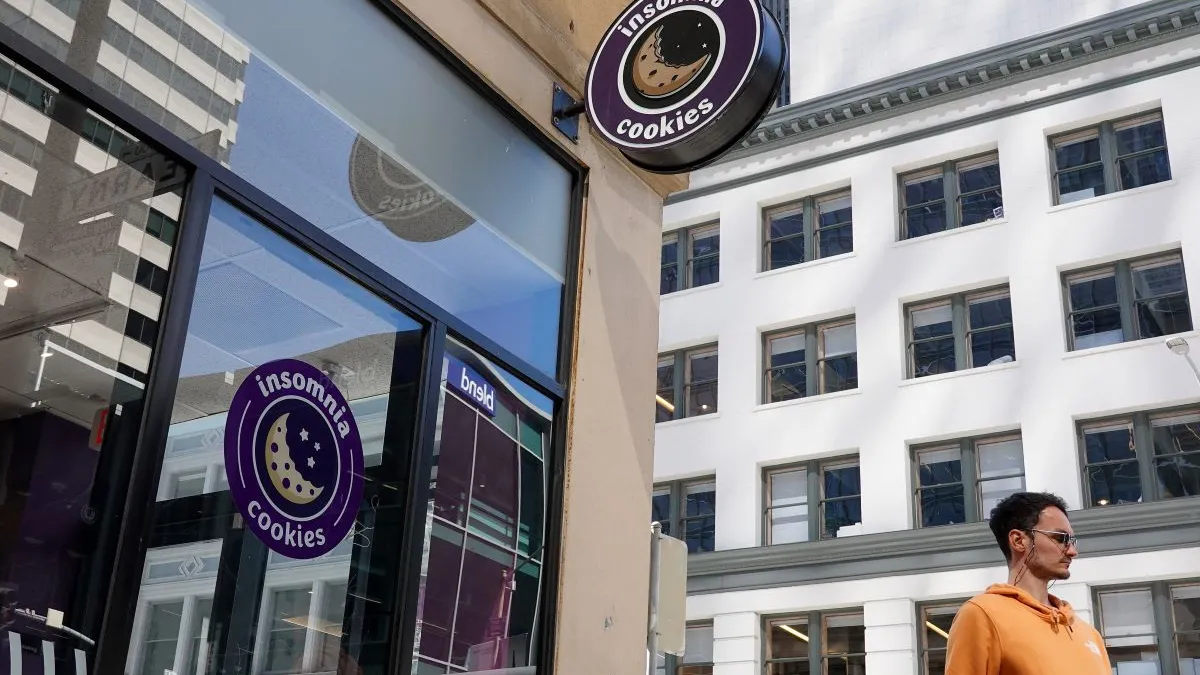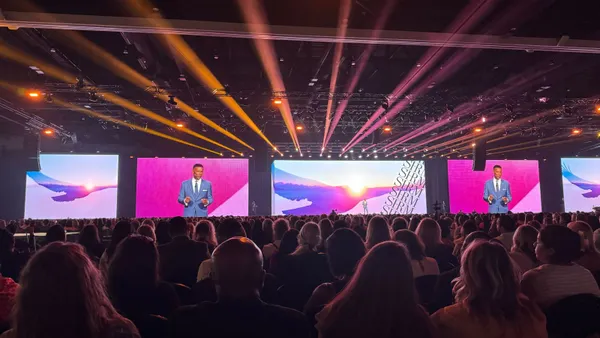When it comes to appreciating employees, the old saying applies: "It's not necessarily what you say, but how you say it that matters."
As employee engagement continues to dominate the HR discussion, employers in all industries may be reconsidering recognition programs. As one expert, Dr. Paul White, author of The 5 Languages of Appreciation in the Workplace, told us: Banking on an old employee recognition program to make employees feel good about working somewhere is not an effective plan. These days, employers need to get a little more creative – and a lot less by-the-numbers.
HR Dive spoke to a couple experts in the field find new ways to tell employees "thank you."
Don't let recognition programs be impersonal
Old-fashioned employee recognition programs involve the old, often joked about standbys like the Employee-of-the-Month award. But these old standbys contribute to the number one reason companies lose key players: These programs don't make people feel valued, White said.
"Recognition can't be a cookie cutter solution, and what makes one employee feel valued simply may not work for another," Marci Rogers, director of HR at advertising agency GSD&M, told HR Dive. "We encourage our supervisors and managers to recognize and thank employees in different ways throughout the year – some more publicly than others – but always in a way which is meaningful to them."
That means managers will need to put energy into actually getting to know their direct reports and understanding the kind of experience an employee expects out of the time invest in work and their job.
Consider an all-hands meeting
Leela Srinivasan, Chief Marketing Officer of Lever, said one way her company creates a culture of appreciation is through weekly all-hands meeting. Every Monday, the entire company comes together, including executives, to talk about where the company is and how things are going. Employees appreciate the transparency, she said – and it gives the company an opportunity to recognize hard-workers in a public way. Even better: with technology that exists today, it's easier for larger companies to make this a reality, too.
"Use a setting like an all-hands as a platform to share successes and talk about what isn't working," she suggested. They can also serve as a platform to acknowledge when the company as a whole worked together to create a great moment. At Lever, the company celebrates the top 10 moments of the quarter, for example.
"It's all about celebrating the team that had come together to accomplish something amazing," Srinivasan said.
Keep it organic
For employers who are larger or growing quickly, it can be difficult to make appreciation feel natural. Often, this reason is why traditional employee recognition programs fail. Instead, try putting appreciation and culture programs in the hands of employees in a way that gives them the freedom to do things in their way, Srinivasan suggested. One of Lever's clients, Lyft, gives a coffee shop or restaurant gift card to new employees so they can set up off-site meetings with people they don't know. The employee is given encouragement by the company but can choose to take out who they wish, she added.
"We're having our first office potluck for Thanksgiving," Srinivasan said. "Small companies in particular, I would encourage them not to shy away from movements like that."
Remember empathy
For any of these programs to work, a company should consider if their culture is open and accepting of people of diverse backgrounds and ideas. An open door policy for all levels, including executives, goes a long way in creating an honest and safe environment that encourages organic connection, Rogers said.
"There are times employees just need an ear and the ability to vent in a safe place," she added. "Other times, it's an opportunity to find the right way to discuss a challenge with solutions in mind. Either way, they know they have a partner in making it better."
Other times, she said, the GSD&M CEO may find that people are putting in really long hours and give the agency a little extra time before a long weekend or holiday to spend time with friends and family, Rogers said.
"As we all know, time is a commodity that once lost is hard to make up, but this unexpected time gives the nod to the sacrifice our employees have made to take care of our clients," she added.
To encourage empathy, Lever uses a color-type personality test during onboarding so that each employee knows and understands their own personality type as well as everyone else's – and it's scarily accurate, Srinivasan said. The results go into a library that all employees can access to learn more about one another.
"It helps people understand their own motivations compared to other members of their team that might be diametrically opposed to them," she added. "It encourages empathy."






















